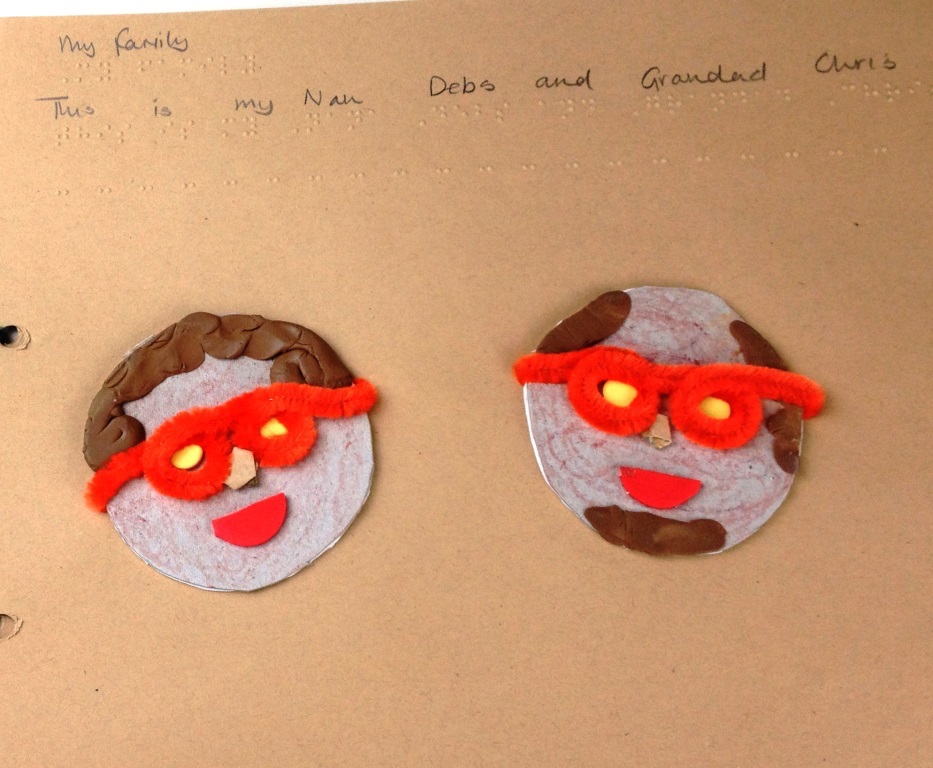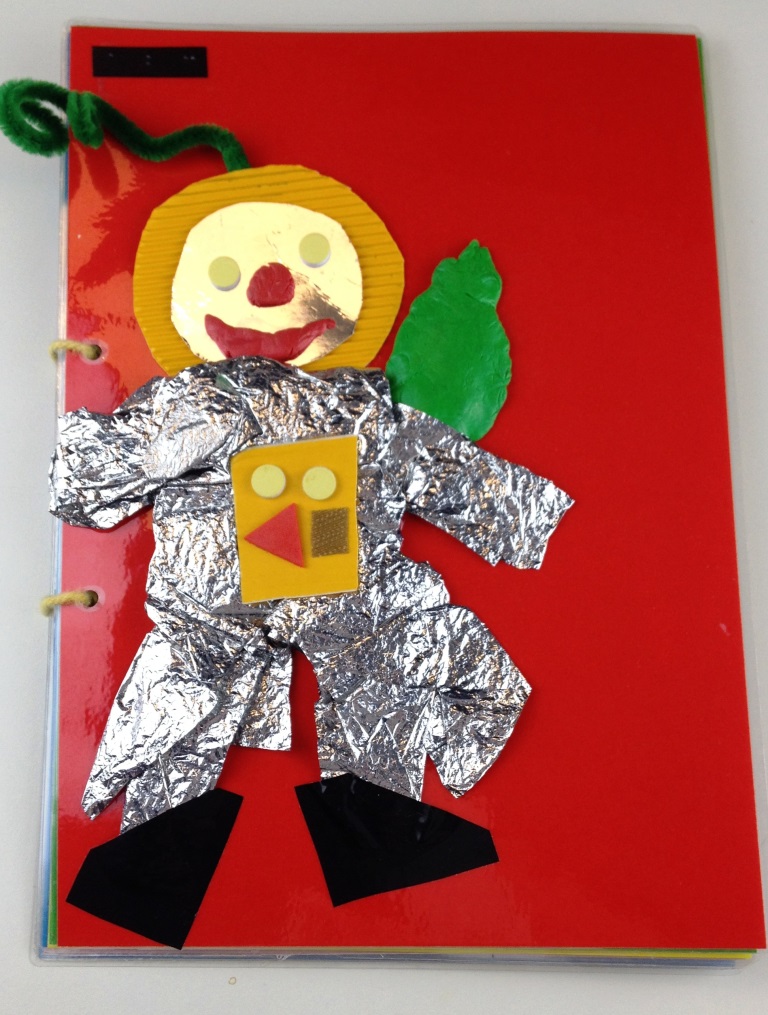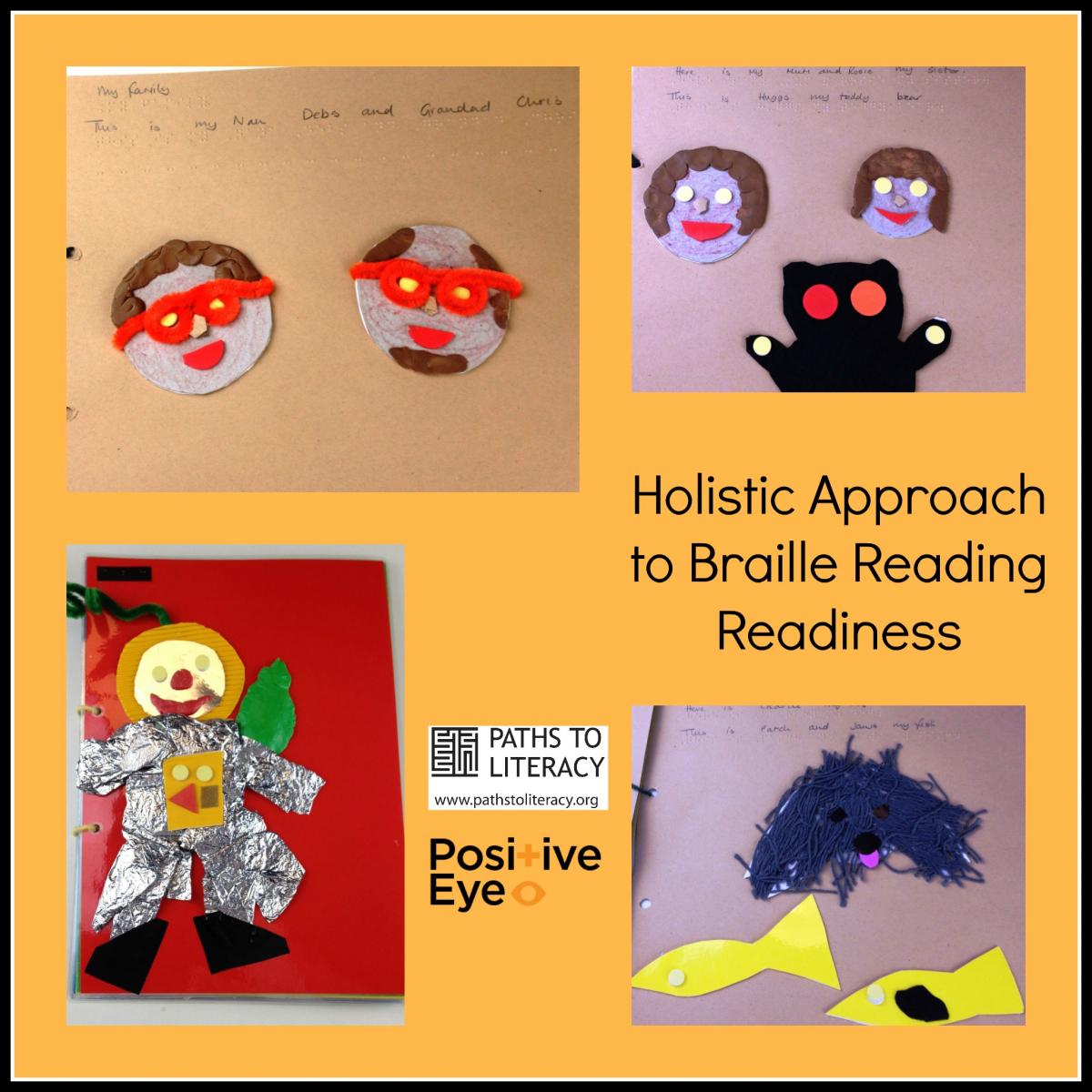
Case study: Holistic Approach to Braille Reading Readiness
This case study of a young boy who is blind includes profile and background information, as well as suggested activities for braille reading readiness
(All names are fictional)
When Sam started attending his Foundation Stage Centre, it was obvious that his family environment had provided rich experiences, nurturing his development in all areas of learning.
A Profile of Sam
Sam was born blind; although he has light perception enabling him to navigate in a confined space, his sight provides him with extremely poor definition.
Jane, Sam’s Mum, learned how to enable Sam’s access and to help him enjoy exploring not only his own environment but many others during his early years. Sam was introduced to many pre-braille skills in readiness for reading and writing. He was able to develop language at the same rate as sighted children; he explored objects and textures as well as being exposed to a wide variety of social experiences. Sam experienced reading braille through tactile books and labels around the home. He learned to sing the alphabet and number rhymes.
In the profile that Jane had provided the school with, important information about Sam including the following details about him:
1. Family
- Sam lives with his mum at her home, with his Nana Debs and Granddad Chris, one small sister called Rosie, two fish called Patch and Jaws and a dog called Charley.
- Sam also has a home at his Dad’s, where he also has a pet, Bugs the very large rabbit.
2. Favourite toys
- Bike and climbing frame. Sam also has a slide outside at Dad’s and when he is at his mum’s house, he plays with Rosie’s pram and a swing ball.
- He also likes, Lego, plastic Meccano or anything messy and is very fond of Huggs the bear that goes everywhere with Sam.
3. Places he enjoys.
- The play-park where he enjoys playing on the large climbing frame and riding his bike.
- The yard at the back of Dad’s where he plays with his friends and rides his bike; he likes to carry Cuggs in the back.
4. Things he can do likes and dislikes
- He can dress himself, use scissors and a knife and fork sing the alphabet, count up to 20 and backwards from ten.
-
He loves to climb and pretend play of any kind especially playing ‘doctors at the hospital’ as he is often there.

- He is good at making rockets and trains out of Lego.
- He enjoys baking, gluing and sticking. He loves stories and listening to and looking at books.
- He doesn’t like sitting still except when he is eating and when he is travelling in a car.
- Jane provided a list of all the different environments which Sam had experienced before starting the Foundation Stage, which have also played a part in shaping and influencing his development:
a) Hospital: Sam visits hospital regularly, travelling by train
b) Visitors: Relatives and his best friends Jack and Beth
c) Child Minder: Sam had a child minder until he was two, where he played with two other children the same age.
d) Friends and relatives houses: Sam likes to visit his Auntie who has a large garden with lots of toys to play with.
e) Church and social club: The church play area where there are other children to play with and lots of things to do especially pretend games.
f) Playgroup: Sam attended one morning a week where he met children from the area. Sam attended playgroup until he was 3 years old.
g) Day Nursery: Sam attended three full days a week until he was four.
h) Holidays: Sam has been on an aeroplane, on a train, on a bus and in a car and also on the London Eye. He has stayed in a tent and a caravan and has climbed on a steam engine. Sam loves swimming and paddling in the sea and making sandcastles.
Observations of Sam during his time in the Foundation Stage setting
Observations were made by practitioners and added to the working profile of Sam, revealing not only his interests in this environment, but also highlighting areas that didn’t attract him. This information allowed Sam’s learning dispositions/ inclinations to become visible. As Sam got to know the areas within the setting he was able to make his own choices. For example:
- It was noticed that he didn’t choose the role-play area until it was turned into a hospital
- Outside, he would only chose to play on the bikes, until the climbing frame was turned into a pretend launching pad and he then enjoyed playing on this
- He listened to stories as long as he had something to feel. Story bags were made containing real things from the story; he shared these objects passing them round as the story progressed
Supporting reading readiness
Keeping a working profile of Sam’s learning dispositions and inclinations, enabled a reading readiness plan to be put in place, based on Sam’s interests and the knowledge and concepts that he already had acquired.
During the Foundation Planning Sessions, professionals identified as many opportunities as possible for Sam to practice reading and writing within the continuous provision and during planned events. Activities were planned with Sam’s needs in mind; forward planning allowing time for different ways for Sam to access the curriculum.
Reading and writing activities (sometimes one to one or in a group) Download booklet of pictures.
- Make a name book and a family book with Sam
- Make an alphabet book with Sam
- Make initial letter sounds and number activities
- Create role-play opportunities including using a brailler, reading books, mark making equipment and counting and measuring equipment
- Encourage model making and labelling
- Provide opportunities for music and singing using modified books, objects and role-play clothes
- Provide opportunities to use technology, listening and encouraging reading and writing
- Provide opportunities for physical play including reading and writing
- Provide opportunities for scientific exploration including reading and writing
Opportunities for reading in the environment
- A good starting point is to make a name book relating to areas in the setting or environment.
- Sticking labels on walls, objects, or in particular areas is sometimes not profitable, as in no time at all they have been explored by lots of little hands and become curly. One of the best ways Sam was helped with navigation around the environment was by making labels of braille words and a 2D representation/picture of the area or object accompanied by a 3D object. It was more beneficial for Sam to feel the object and label at one point in the nursery and then to go and find the area. The labels and objects could be kept in a box, and this could be an activity that Sam built on each week.
- A workstation for Sam meant he could find the things he needed independently, Labels can be placed on different coloured paint pots or felt tips. Labelling drawers and Sam’s own work offered further opportunities for reading
There are further shared ideas on Positive Eye’s shared ideas page https://positiveeye.co.uk/

